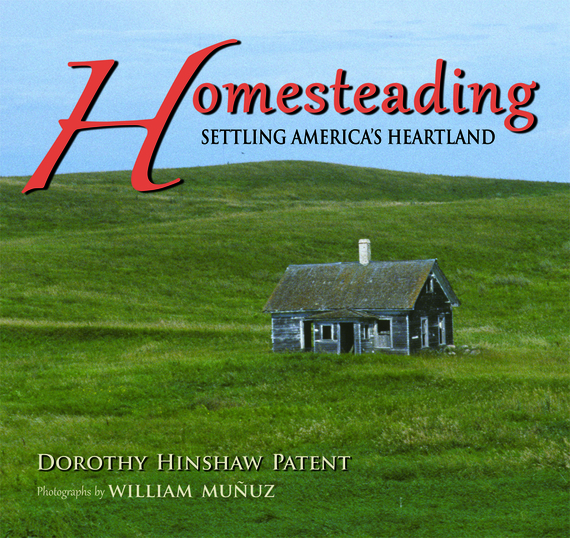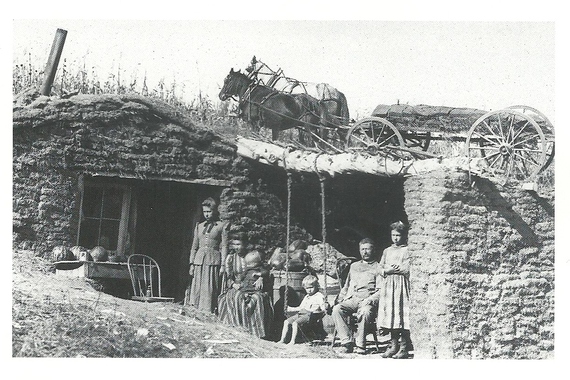President Lincoln signed the first Homestead Act in 1862, promising 160 acres of free land to any citizen 21 or older for the price of a filing fee of $14.00 and another $5.00 fee for the deed four years later. The land in question was the "empty prairie" of the Great Plains between the Mississippi River and the Rocky Mountains. Pioneers passed through this land on their way to settle the West Coast and thought of it as the "Great American Desert." The catch was that a homesteader had to improve the land by building a house and plowing at least 20 acres for crops. Only then, could they "prove up" and file for a deed to the land. This was no walk in the park for the timid but a brutal challenge.
The newly revised and expanded Homesteading: Settling American's Heartland by Dorothy Hinshaw Patent, illustrated with vivid photographs by William Muñoz, describes what it took to meet this challenge. Written for middle grades, this is an eye-opener for children and adults who are generations removed from hardships endured by the parents of Laura Ingalls Wilder. Yes, Little House on the Prairie brought this history to life as fiction. But middle-grade nonfiction literature like this adds immeasurably to our understanding because it is true. In fact, this is a perfect book to read in connection with Little House on the Prairie. Such paired use of a nonfiction book along side a work of fiction is one of the things the Common Core State Standards is asking teachers to do.
Here's an archival 1889 picture from the book of a real homesteading family -- they had lots of children because they needed them to work the farm. They built their sod home into a hillside for added protection from the sometimes violent weather that crossed the open plains.
Patent opens her book with an example of present-day homesteaders who obviously value the practice of subsistence living. These people choose to live without the creature comforts that many of today's overweight, under active, entertainment-addicted children take for granted. These contemporary homesteaders clearly value the work-hard-and-see-the-fruits-of-one's-labors lifestyle. Homesteading will give a lot of food for thought around a family dinner or in a classroom, especially if all the electronic devices are turned off so that people can focus on conversation.
According to psychologist, Angela Duckworth, the most important trait for success is grit. There is no better example than American homesteaders.


